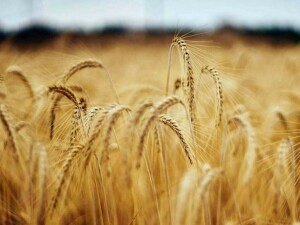Rafhan Maize Products Company Limited
Rafhan Maize Products Company Limited (PSX: RMPL) was established in Faisalabad, Pakistan. The company uses maize as the raw material to make and sell a number of industrial products: industrial starches, liquid glucose, dextrose, dextrin, and gluten meals. The textile, food, confectionery, pharmaceutical, paper, and corrugation industries, to name a few, use the products of Rafhan Maize. The company has three plants, located at Faisalabad, Jaranwala, and Jamshoro.
Shareholding pattern

As of June 30, 2020, over 71 percent of shares are owned by the associated companies, undertakings, and related parties. This category solely includes Ingredion Incorporated. The local general public owns about 20 percent shares, while the directors, CEO, their spouses, and minor children own roughly 6.5 percent shares. Within this, Mr. Zulfikar Mannoo is a major shareholder. The remaining about 2.5 percent shares is with the rest of the shareholder categories.
Historical operational performance
Rafhan Maize Products has mostly seen a growing topline, with the exception of CY15 when it contracted by 2.3 percent. profit margin has largely followed an increasing trend.
In CY17, revenue grew by 2.8 percent, crossing Rs 26 billion in sales. This was attributed to higher sales of Liquid Glucose, Maize Starch, and Maize Oil Cake products. Production cost, on the other hand, made a marginally smaller share in revenue at 71.4 percent, compared to over 72 percent in the previous year. As a result, the gross margin grew to over 28 percent. This also trickled down to the bottom line with a net margin recorded at nearly 17 percent. Distribution cost increased as a percentage of revenue, during the year; this was due to major increases seen in salaries expense, freight and distribution, and commission expense. However, the rise was more or less offset by a lower tax expense for the year.

The company witnessed the highest growth in revenue in CY18 thus far, at 13.6 percent, crossing Rs 29 billion in sales. This can be attributed to the growing demand coming from writing/printing and industrial paper, board, and corrugation that were major consumers of the company’s products. Within the product range, higher sales were seen for Liquid Glucose, Dextrose and Starch. However, this was also accompanied by a more than the corresponding rise in production cost as inflationary pressures caused input prices to rise. Therefore, the gross margin shrunk to 26.8 percent. But operating and net margin were somewhat sustained at close to 23 percent and 16 percent, respectively, due to a rise in other income and decreases in distribution and administrative expenses, as a percentage of revenue. Other income increased due to a higher mark-up figure on staff loans and profit on bank deposits, in addition to Rs 21 million earned in foreign exchange gain.

At 19.3 percent, Rafhan Maize saw the largest growth in revenue in CY19, due to a price increase; the topline crossed Rs 35 billion. Both local and export sales registered a growth. Export sales have consistently been rising due to the export destinations such as Middle East, Sri Lanka, Bangladesh that are fast-growing, developing economies. However, the higher revenue could not be translated into higher profits, as production cost made a larger share in revenue, at over 74 percent, due to high input prices that were, in turn, due to inflation. But the net margin was kept from declining drastically, and was marginally lower at 15.4 percent, due to support coming from other income. The latter was derived through a mark-up on staff loans and profits in bank deposits.

Despite the havoc created as a result of Covid-19, Rafhan Maize increased its revenue by 1.7 percent in CY20. The majority of the challenges were concentrated in the second quarter which is when the lockdown was imposed. This was a result of a slowdown in the textile sector as orders were canceled and supply chains disrupted. On the other hand, the food segment and animal nutrition segment saw relatively stable performance. Production cost also went down as a percentage of revenue, to 72.7 percent, while other income continued to increase. Thus, the net margin improved to nearly 17 percent for the year.
Quarterly results and future outlook
Revenue in the first quarter of CY21 was higher by 5.6 percent year on year. This was chiefly attributed to a rise in prices and stability in production costs. Demand from paper, corrugation and textile also grew that helped to improve revenue. Production was a considerably lower year on year that allowed for better profitability for the period. In the second quarter of CY21, revenue was higher by 28.6 percent year on year. The major increase was due to a severe hit in volumes that was seen in the same period last year due to Covid-19 related lockdowns. Production cost was also noticeably better in 2QCY21 as a percentage of revenue. Thus, the net margin was recorded at 20 percent, compared to 16 percent in 2QCY21.

While there is generally a positive outlook for 2021/2022, several factors such as Covid-19, political environment, internally and externally both, and inflation can impact future profitability; particularly, with rises in prices of agricultural products, along with currency depreciation.

























Comments
Comments are closed.